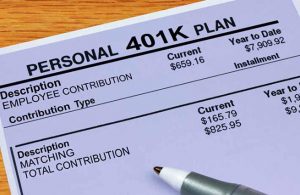How to Maximize 401(k) Limits and Savings Strategies
 Your employees will be able to save more money in their 401(k) retirement accounts this year. The big question, though, is should they save the annual maximum? For employer match accounts, the Internal Revenue Service raised the annual contribution cap for 401(k) and defined contribution retirement accounts from $18,500 to $19,000.
Your employees will be able to save more money in their 401(k) retirement accounts this year. The big question, though, is should they save the annual maximum? For employer match accounts, the Internal Revenue Service raised the annual contribution cap for 401(k) and defined contribution retirement accounts from $18,500 to $19,000.
Defined contribution retirement accounts include 403(b) plans, most 457 plans, and the federal government’s Thrift Savings Plans. The catchup limit on defined contribution plans for employees who are 50 or older remains unchanged at $6,000. That means employees age 50 and older can save as much as $25,000 in their 401(k) plan each year.
An employee can defer $19,000 of pretax earnings. There also is a $56,000 limit (up from $55,000) to how much employee and employer contributions and profit-sharing contributions can be made to defined contribution plans. Families who qualify can claim a Saver’s Credit on their tax return for the amount they save each year.
The maximum amount that can be saved annually was increased $1,000 for married couples to $64,000; up $750 to $48,000 for heads of households; and up $500 to $32,000 for singles and single filers.
The credit was formerly named the Retirement Savings Contributions Credit. It gives a special tax break to low- and moderate-income taxpayers who are saving for retirement. Many retirement experts advise employees to “max out” their 401(k) contributions. Maxing out means contributing the maximum amount a person is allowed to save annually. This maximum amount does not include employer matching contributions, allocations of forfeitures or any mandatory contributions.